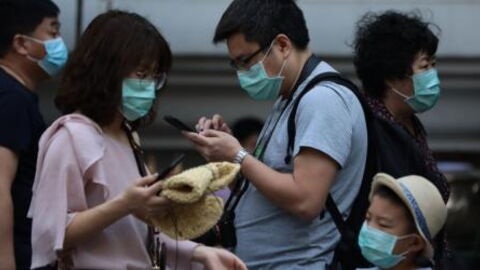Masks remain an essential tool in the prevention of another COVID-19 outbreak and a new lockdown, as is occurring in many countries around the world. However, while surgical masks have proven to be effective if worn properly, few studies have looked at the effectiveness of homemade masks. Researchers from Florida Atlantic University in the USA recently published the results of their research on the subject in Physics of Fluids.
Discover our latest podcast
Not just any mask
The spread of droplets carrying SARS-CoV-2 remains the main mode of transmitting the virus. To determine the effectiveness of homemade masks, scientists reproduced sneezing and coughing, from which the particles created were illuminated with a laser. Different configurations, shapes, and types of masks were tested, such as a non-sterile conical mask sold in pharmacies, a handmade mask made of cloth, and a bandana.
Without a mask, sneezing could project particles for over 8 feet. With a bandana, this distance was reduced to just over 3 feet. The distance when using a cloth mask folded in half was 15 inches... It was determined that these two options do not offer sufficient protection in confined spaces where social distancing may be limited (public places, public transport). The conical mask purchased in pharmacies allowed the transmission of droplets to be limited to a distance of 9 inches.
What the mask is made out of a factor
However, the study also showed that homemade masks can be more efficient than commercially purchased masks. A two-layer, tightly stitched and padded cotton mask reduced the distance the droplets were projected to only 2 inches, but the filtration capacity of a homemade face covering depends on what it is made out of. According to the World Health Organization (WHO), the effectiveness of these masks can range from 0.7 to 60%.
The organisation published a guide on June 5, 2020, in which they outlined how to make the most effective mask: it should be made of three different layers (an interior layer made of something absorbent, a middle layer made with a filter, and an exterior, less absorbent layer to halt the projection of droplets), it should be reusable, and able to be washed at 60 degrees. Finally, whatever the shape, the mask should be able to fit tightly around the chin, nose, and cheeks.















